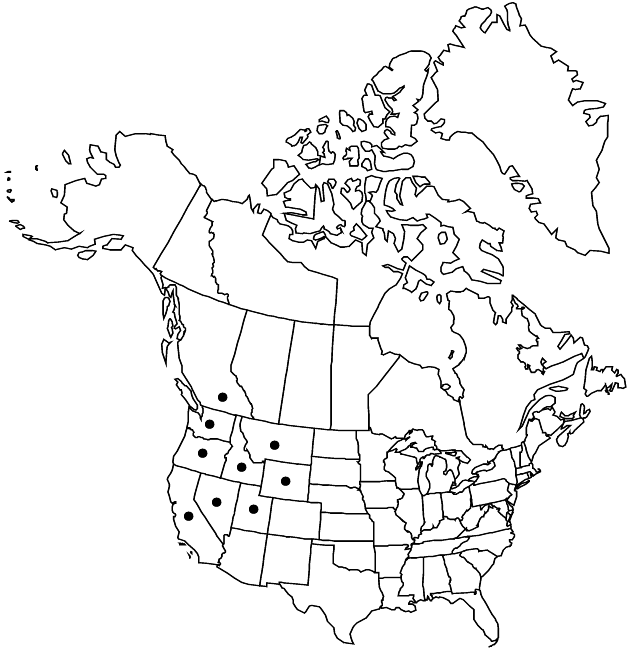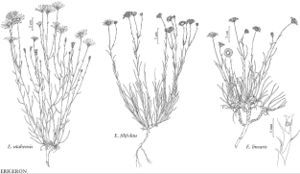Erigeron linearis
Contr. U.S. Natl. Herb. 11: 567. 1906.
Perennials, 5–15 (–20) cm; taprooted, caudices branched, woody. Stems erect to slightly basally ascending, sparsely strigose (hairs white), eglandular. Leaves mostly basal (persistent) or basal and cauline; basal blades linear to linear-oblanceolate, (15–) 30–70 (–90) × 0.5–3 mm, cauline (on proximal 1/3–2/3 of stems) slightly reduced (bases abruptly widened, thickened, white-indurate, sheathing stem) margins entire, faces loosely strigose, eglandular. Heads 1 (–3). Involucres 4–7 × 8–13 mm. Phyllaries in 2–3 (–4) series, strigose to villous, minutely glandular. Ray-florets 25–38; corollas usually bright-yellow, sometimes cream to nearly white, 4–8 mm, laminae weakly coiling. Disc corollas 3.5–5.3 mm. Cypselae 2–2.3 mm, 2-nerved, faces sparsely strigose; pappi: outer of setae, inner of 10–20 bristles. 2n = 18, 27, 36, 45.
Phenology: Flowering May–Jul(–Aug).
Habitat: Open rocky slopes, grassland, sagebrush, bitterbrush, juniper
Elevation: 700–2000(–3100) m
Distribution

B.C., Calif., Idaho, Mont., Nev., Oreg., Utah, Wash., Wyo.
Discussion
Selected References
None.
